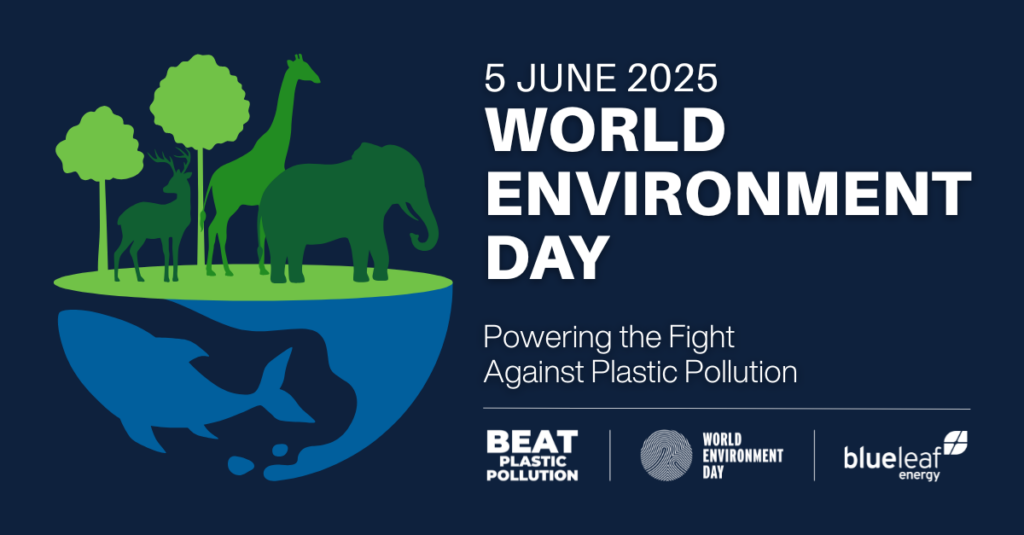
This World Environment Day, as the global community unites to #BeatPlasticPollution, at Blueleaf Energy we’re reflecting on our role in reducing the tidal wave of plastic waste engulfing our planet. While plastic has become ubiquitous in modern life, its environmental cost is becoming far too high. The good news? Our core mission to advance the energy transition can play a real role in stemming the tide on plastic pollution. In fact, reducing plastic pollution is yet another way renewable energy offers a powerful pathway to a cleaner, more sustainable future.
The Scale of the Crisis
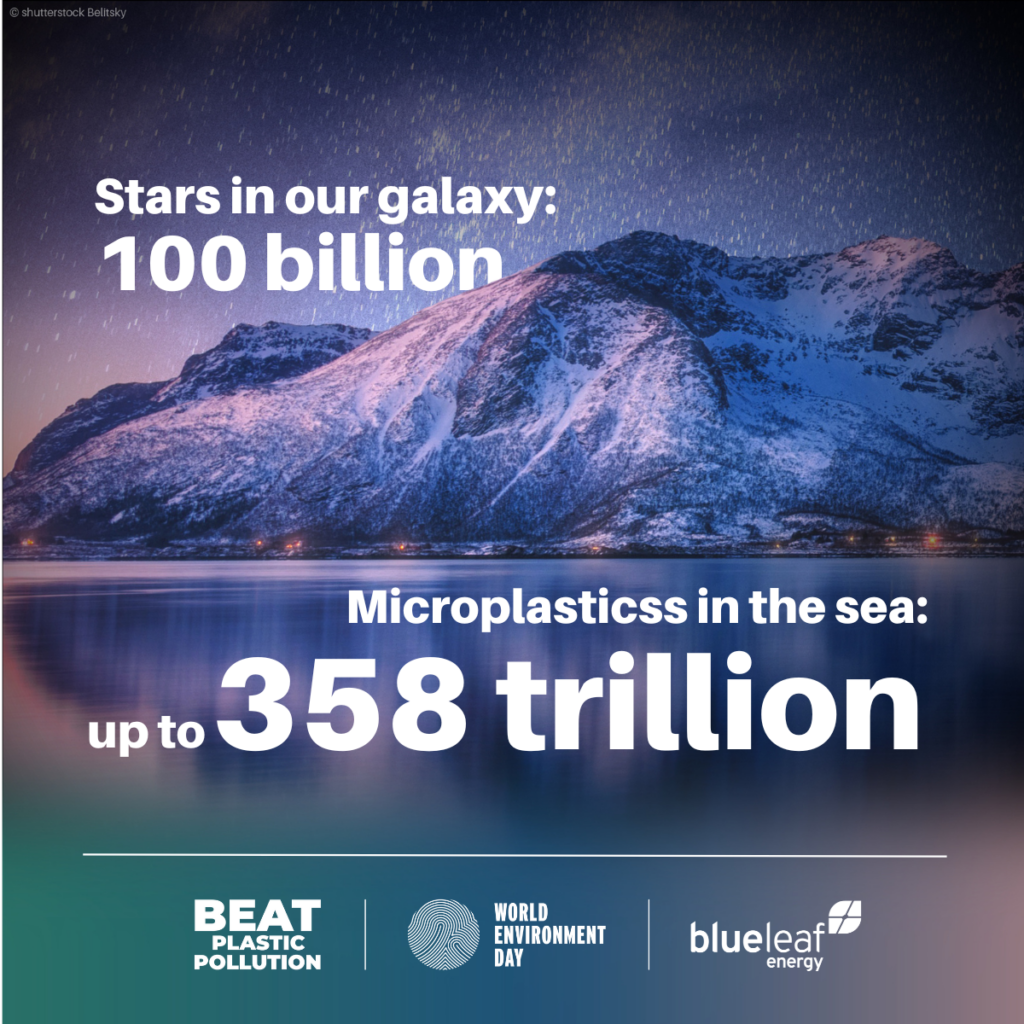
The scale of the plastic crisis is staggering. According to the United Nations Environment Programme (UNEP), the world generated an estimated 400 million tons of plastic waste last year alone. This includes everything from water bottles and shampoo containers to polyester shirts and PVC piping, much of which escapes waste systems and contaminates our ecosystems. As Elisa Tonda, Chief of the Resources and Markets Branch of UNEP, rightly states, “Plastic pollution is one of the gravest environmental threats facing the Earth but it’s a problem we can solve.”
How Renewables Can Power Change
So, how does renewable energy fit into this critical mission? Perhaps the biggest connection lies in the fundamental nature of plastic itself. Plastic is predominantly derived from petrochemicals, which are fossil fuels. The entire lifecycle of traditional plastic, from extraction to production, is deeply intertwined with a reliance on these finite and polluting resources. By championing renewable energy – solar, wind, hydropower – we directly reduce the demand for fossil fuels. This shift away from fossil fuels lessens the availability of cheap raw materials for plastic production, creating economic pressure and incentivizing innovation towards more sustainable alternatives.
That’s the supply side connection, but there is a further connection in improving waste management of plastics. Solar-powered devices are already being developed and deployed to clean up plastic waste from rivers and oceans. For example, The Ocean Cleanup, a non-profit, developing and scaling technologies to rid the world’s oceans of plastic. They are deploying technologies such as the Interceptor Original, a high-tech, autonomous, river-cleaning device which removes plastics from rivers before it is able to flow into our oceans. This dynamic technology, is fully powered by solar energy and already being used in multiple countries across Southeast Asia.
Embracing a Circular Economy
Beyond reducing the foundational demand for virgin plastics, renewable energy is vital for enabling a truly circular economy. Imagine a future where products are designed for longevity, reuse, and recycling. Renewable energy can power the manufacturing processes of these sustainable alternatives, such as bioplastics derived from renewable sources like corn starch or bamboo. It can also power the recycling facilities that give existing plastics a second life, significantly reducing the need for new plastic production. While recycling alone isn’t a silver bullet – as UNEP highlights, only about 9% of plastics are actually recycled globally – it’s a vital component of a broader strategy, and renewable energy makes this process far more sustainable.
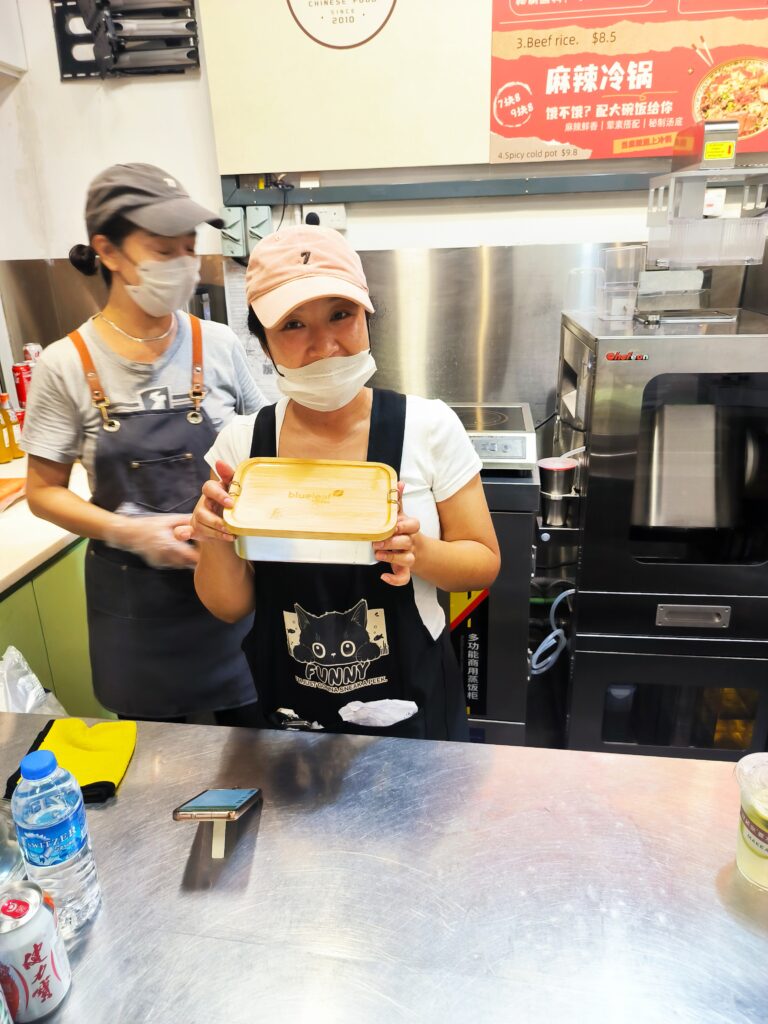
At Blueleaf Energy, we are working to imagine how we can embrace a more circular economy today. Recognizing the pervasive issue of single-use plastic, especially in daily routines, we took a deliberate step in 2024 to reduce our internal plastic footprint. We now proudly provide all our employees with reusable steel and bamboo lunch boxes and drinking bottles. This initiative is part of our commitment to eliminating the single-use plastic waste generated from our culture of “dao-baoing” (taking away) meals at lunch.
It’s a small step, but one we were inspired to take as we cleaned a Singapore beach together and our CEO, Ram Natarajan, noticed most of the 340kg of trash we collected was actually single-use plastic waste!
It was a staggering realization to look at how much such small, lightweight items can contribute to damaging our environment. That day we vowed to start packing a punch at lunch for the fight against plastic pollution.
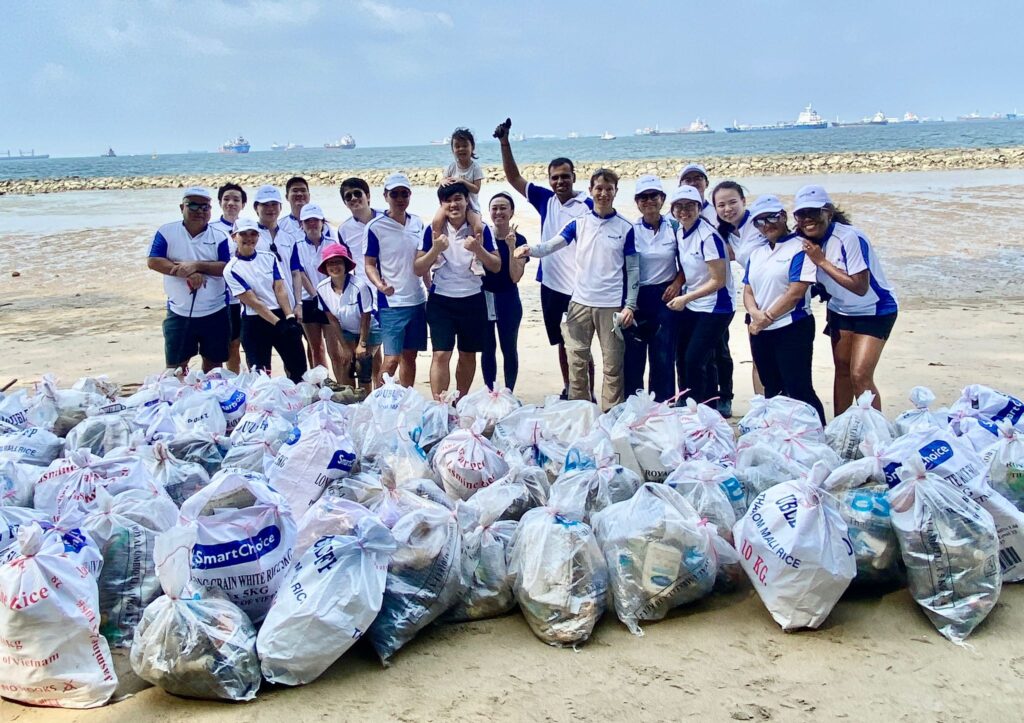
It Takes a Collective Effort
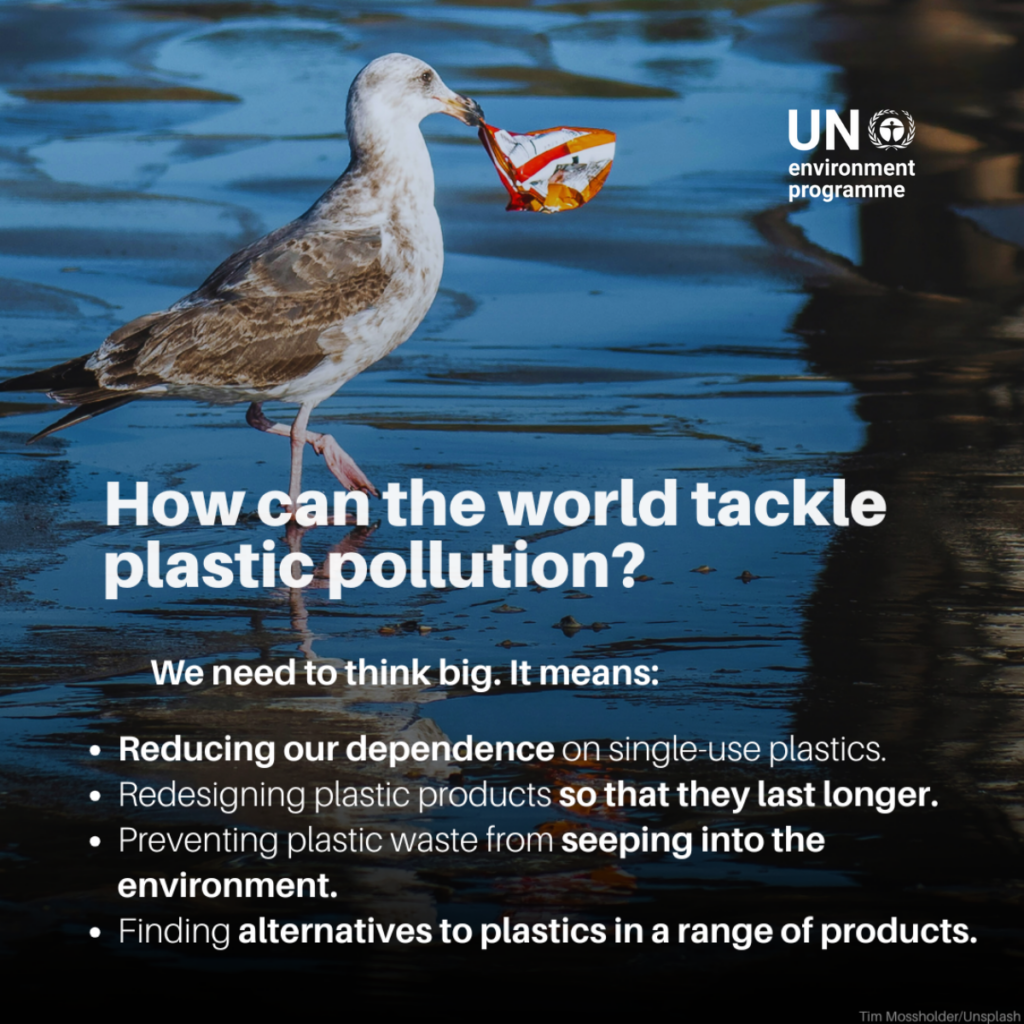
The fight against plastic pollution requires a multi-faceted approach, moving beyond just recycling to encompass every stage of a product’s life: from design and production to consumption and disposal. This World Environment Day serves as a powerful reminder that our choices, both as individuals and as companies, have a profound impact. By accelerating the global transition to renewable energy, we don’t just reduce carbon emissions; we also dismantle a key pillar of the plastic pollution crisis, paving the way for a cleaner, healthier planet for generations to come.
For more insights on the plastic pollution crisis and global efforts to combat it, read the full UN article here: “Answering 10 pressing questions about plastic pollution“.